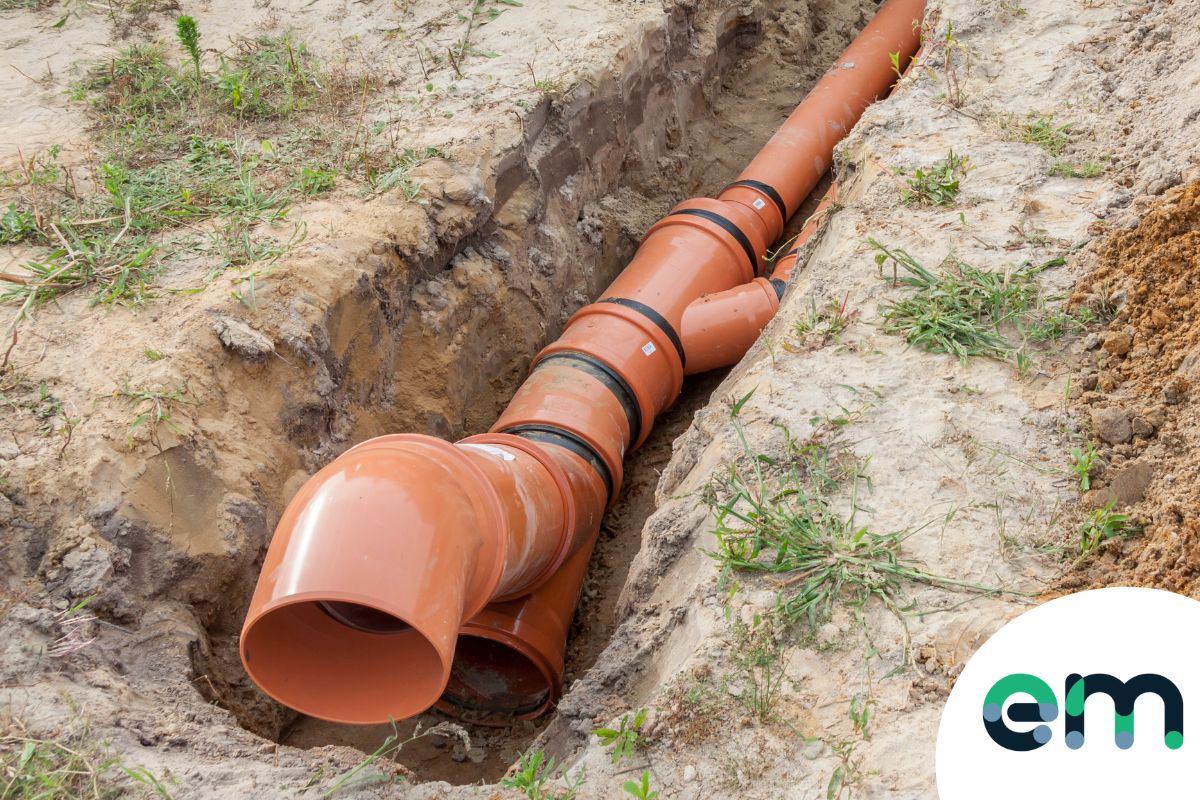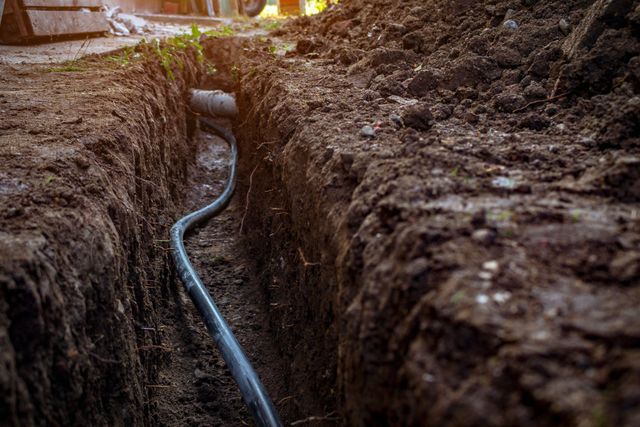Tips for Preventing Everyday Plumbing Problems in Your Home
Tips for Preventing Everyday Plumbing Problems in Your Home
Blog Article
The article listed below relating to What You Can Do to Avoid Plumbing Problems is immensely remarkable. Don't skip it.

Introduction
Maintaining a functional plumbing system is important for a comfortable home. By taking preventive measures, you can stay clear of usual plumbing problems that may interrupt your life and incur pricey repairs.
Routine Upkeep Checks
Regularly checking your plumbing system is necessary for recognizing potential concerns prior to they rise. Check pipelines, faucets, commodes, and appliances for leaks, corrosion, or indicators of deterioration.
Enjoy What You Flush
Bear in mind what you flush down your toilets. Stay clear of purging items such as wipes, cotton balls, hygienic products, and paper towels, as these can cause obstructions and back-ups in your pipelines.
Appropriate Disposal of Oil and Food Waste
Dispose of oil, oils, and food scraps effectively to prevent accumulation in your pipelines. Prevent putting grease down the tubes, as it can solidify and trigger obstructions. Make use of a strainer in your kitchen area sink to catch food fragments and vacant it routinely.
Monitor Water Stress
Watch on your water pressure to avoid tension on your pipes and home appliances. High water pressure can bring about leakages and damage over time. Take into consideration mounting a stress regulatory authority to preserve optimal water pressure throughout your home.
Secure Pipes from Cold
During winter, take steps to avoid your pipes from freezing. Protect subjected pipelines, especially those in unheated locations like basements and attics. Allow faucets to leak during freezing temperatures to stop water from cold in the pipelines.
Address Leaks Quickly
Deal with any kind of leakages or leaks as soon as you see them. Also minor leaks can waste water and create damages to your home in time. Tighten loosened installations or change worn-out seals to avoid leakages from worsening.
Be Gentle with Plumbing Fixtures
Avoid utilizing extreme force when running plumbing components such as faucets and valves. Misuse can create damage, bring about leakages and various other breakdowns.
Normal Drainpipe Cleansing
Arrange regular drain cleansing to stop buildup of hair, soap scum, and various other particles. Make use of a drain serpent or enzymatic cleaner to eliminate obstructions and maintain smooth drain.
Mount Water Softeners
Think about setting up a water softener if you have hard water. Difficult water can cause mineral accumulation in your pipes and home appliances, resulting in minimized water flow and efficiency.
Inform Home Members
Inform every person in your household about appropriate plumbing methods. Educate them what need to and shouldn't be purged or gotten rid of away to stop preventable plumbing troubles.
Verdict
Protecting against usual plumbing problems in your home calls for persistance and routine maintenance. By following these safety nets, you can make certain that your plumbing system runs smoothly and prevent costly repairs in the future.
How to Deal With and Prevent Common Plumbing Problems
Plumbing Maintenance Tips
The basic task for any maintenance schedule is the inspection. Even though you are using your water every day for a variety of things, you won’t notice some of those issues that start as small leaks or corroded pipes and fittings. You’ll also want to test the responsiveness of your plumbing and do a bit of cleaning to keep everything in good shape. Go through this Check-Test-Clean routine every 3-4 months.
Check Your Pipes
Examine all exposed pipes under sinks and behind toilets for signs of moisture and corrosion on brass and copper fittings. Condensation on cold metal pipes is normal on humid days, so if you detect dampness on metal pipes on hot days, make a note to check again when your home is cooler. Corrosion is created by moisture on metals, so it could indicate a slow leak, but it could also be a result of constantly “sweating” pipes from condensation. Heavily corroded fittings should be replaced, even if it’s just from condensation, and keep a watch on those areas that show a lot of corrosion to see if there is an actual leak.
Most leaks are easily fixed by homeowners by replacing shower heads, fixture seals, and valves. Leaks from an average household can add up to more than 10,000 gallons of water each year. That’s about the amount of water you’d need to wash 270 loads of laundry, so don’t ignore those little drips because they can really add up.
Test Your Faucets and Water Pressure
Go to each of your faucets and turn on the hot and cold water independently to monitor the water pressure. Different faucet styles, like low-flow designs and fixtures with specific purposes, will produce slightly different water pressure, but judge accordingly as you test each source of water. They should all have a steady flow without fluctuating, even when opening and closing the tap.
As you’re testing the water pressure, also pay attention to how the drain is working. Slow drains could indicate a blockage building up, and it’s always easier to fix a clogged drain before it has gotten to the point of complete blockage. Don’t forget about testing the toilet drain. When you flush the toilet, check the base for any signs of leaking, which would likely be an issue with the wax seal.
Clean Out Buildup
Remove aerators on faucets and shower heads to remove the buildup of hard water deposits that can slow and distort the water flow. Clean these parts by letting them sit in a bowl of vinegar or calcium and lime remover.
Call in the Pros
Some homeowners are just fine doing these fairly easy maintenance tasks, but they still take time, and some people would rather have a trained eye look at their plumbing. Our professionals at Mr. Rooter Plumbing in Oneida will be able to detect some issues you may not notice and use tools and products to provide you with thorough plumbing system maintenance and cleaning.
DIY Plumbing Mistakes You Want to Avoid
With the abundance of information available on the Internet, especially some of the professional “how-to” videos that show you the step-by-step process of common household tasks, you can be quite successful in numerous fixes to do with various parts of your house. Taking on the maintenance and repairs of your home can make you feel proud and accomplished as a homeowner, but there are a number of things you should avoid related to the plumbing of your home that can make you feel foolish and embarrassed when you need to call in a professional to fix a problem you created or made bigger.
These plumbing mistakes aren’t specifically to do with plumbing problems that should have been left to a licensed plumber (we’ll let you know about those next), but they are about poor planning of renovations or new setups and inappropriate actions.
Flushing the wrong things down the toilet.
More common in a household with children, this mistake may cause a blockage that can’t be removed without the services of a plumber. We’ve had some calls that have required the removal of the toilet and replacement of pipes — a time-consuming and costly mistake. As yucky as it may be to remove something from the toilet, don’t just hope that it will just pass through.
If it’s something the toilet wasn’t designed for a load of toilet paper your toilet and plumbing weren’t designed to handle, take the path of least resistance and fish it out! Unfortunately, children are sometimes the ones doing the flushing, and you realize the toilet is clogged only after the damage has been done. If you can’t bring it up with a plunger, call in a professional who will solve your problem the easiest way.
Washing inappropriate materials down the drain
Sinks and bathtubs sometimes get used for waste disposal in the wrong way. The most common types of materials that get carelessly washed down the drain are construction materials like cement compound and other hardeners. Some people do this thinking it will just get washed away with the water, but unless it’s a very small amount, you will likely be faced with a clogged drain that will only be remedied by replacing all the drains and pipes effected.
Breaking faucets or fittings by using too much force
That dripping faucet or leaking drain under your sink doesn’t need excessive force to be fixed. Dripping faucets are rarely fixed by tightening the handle more than usual, and a leaking pipe isn’t best looked after by cranking the wrench on the fitting. Sometimes dripping is due to wear and tear, and a replacement, new seal or other minor part may do the job.
Taking something apart and forgetting how to put it back together.
You may think that taking a faucet apart or attaching your new dishwasher to existing plumbing is an easy enough task, but you may run into problems if there are too many components to remember, or if that new dishwasher doesn’t have the same hookups as your old one. Unless you’ve got experience working with plumbing components, this may be a job where you want to enlist the help of a more knowledgeable friend or just pay for the services of a professional
Having too many fixtures.
Some low pressure issues can be related to the number of fixtures the plumbing has to service. Having too many fixtures could be the result of poor planning in the initial build or an addition or renovation that has created more demand than the well or municipal water supply can support. Too many fixtures can have a big impact on your home’s water pressure.

As a serious person who reads about How to Deal With and Prevent Common Plumbing Problems, I figured sharing that chunk was a good thing. Those who enjoyed our page if you please be sure to pass it around. We cherish reading our article about Tips on How to Prevent Plumbing Issues in Your House.
Information Report this page